How to Draw 3D Shapes: An Essential Guide
Welcome to your ultimate resource for mastering the art of 3D drawing! Whether you’re a budding artist or someone looking to enhance your skills, this guide is tailored just for you. Drawing three-dimensional shapes can seem daunting at first, but with the right techniques and a sprinkle of creativity, you’ll be transforming flat lines into stunning, lifelike forms in no time. Imagine taking a simple cube and making it leap off the page, or turning a basic circle into a perfectly round sphere. Sounds exciting, right? Well, let’s dive into the amazing world of 3D shapes and uncover the secrets that will elevate your artistic journey!
To begin your adventure in 3D drawing, it’s essential to grasp the concept of perspective. This is the magical technique that creates the illusion of depth on a flat surface. Think of it as the window through which you view your artwork. There are primarily two types of perspective that you should familiarize yourself with: one-point perspective and two-point perspective. One-point perspective involves a single vanishing point on the horizon line, making it perfect for drawing roads or railway tracks that seem to recede into the distance. On the other hand, two-point perspective uses two vanishing points, ideal for rendering corners of buildings or boxes. By mastering these perspectives, you'll be able to accurately depict shapes in relation to the viewer's eye level, making your drawings feel more realistic and engaging.
Before you dive into the complex world of advanced shapes, it’s crucial to build a strong foundation with the basics. Mastering simple forms like cubes, spheres, and cylinders will set you up for success. These shapes are the building blocks of 3D drawing, and understanding how to manipulate them is key. For instance, a cube can be transformed into a complex structure by simply altering its angles or adding additional shapes to it. As you practice, pay attention to how these basic forms can be combined and adjusted to create intricate designs. This foundational knowledge will empower you to express your creativity in ways you never thought possible!
Cubes are the cornerstone of 3D drawing, and understanding how to construct them is vital. Start by drawing a simple square for the front face. From each corner, draw lines extending back towards your chosen vanishing point. Connect the ends of these lines to form the back face of the cube. This method ensures that your cube maintains the correct proportions and perspective. Want to take it a step further? Try drawing cubes in different orientations and perspectives. This practice will help you visualize how cubes exist in three-dimensional space, making your drawings more dynamic and engaging.
Now that you’ve got your cubes down, it’s time to breathe life into them with shading. Effective shading is what separates a flat drawing from a three-dimensional masterpiece. Start by identifying your light source. Imagine where the light hits the cube, creating highlights and shadows. Use techniques like hatching and cross-hatching to add texture and depth. The darker the area, the more shadow it will have. This contrast will give your cube a sense of volume and make it appear more realistic. Remember, shading is not just about darkness; it’s about creating a visual narrative that guides the viewer’s eye.
Even seasoned artists can make mistakes when drawing cubes. One common error is failing to keep the lines consistent in perspective. If your lines don’t converge towards the vanishing point, your cube will look flat and unrealistic. Another mistake is neglecting the shading; without it, your cube will appear lifeless. To avoid these pitfalls, take your time and double-check your work. Practice makes perfect, and soon enough, you’ll be drawing cubes that look like they’re ready to jump off the page!
Once you’ve mastered cubes, it’s time to explore the world of spheres and cylinders. These shapes add a unique flair to your 3D drawings. To draw a sphere, start with a circle and then add shading to indicate its roundness. The key is to create a gradient effect that mimics the way light interacts with the surface. For cylinders, begin with two parallel lines and connect them with curves at the top and bottom. This will give your cylinder a solid, three-dimensional look. Remember, practice is essential; the more you draw, the more natural these shapes will become!
Feeling confident with the basics? Awesome! Now it’s time to tackle more advanced 3D forms. This section will introduce you to drawing pyramids, cones, and even more complex structures. These shapes often combine elements from the basic shapes you’ve already mastered, allowing you to create intricate designs. For example, a pyramid can be viewed as a square base with triangular sides converging at a point. By understanding how to break down these shapes into simpler components, you’ll expand your artistic repertoire and enhance your creativity.
One of the most exciting aspects of drawing in 3D is the ability to combine shapes to create intricate designs. For instance, by merging a cube with a cylinder, you can create a unique object that might resemble a lamp or a futuristic building. The possibilities are endless! Experiment with different combinations and let your imagination run wild. This practice will not only improve your technical skills but also inspire you to think outside the box—literally!
To maintain proportions and ensure accuracy in your 3D drawings, consider using a grid. A grid can act as a guide, helping you keep your shapes aligned and proportional. You can create a simple grid on your drawing paper or use graph paper for more precision. As you draw, refer to the grid to check that your lines and shapes are consistent. This technique is especially useful when working on more complex structures, as it helps maintain a sense of balance and harmony in your artwork.
- What materials do I need to start drawing 3D shapes? All you need is some paper, a pencil, and an eraser. Optional tools include colored pencils or markers for shading.
- How long will it take to master 3D drawing? Mastery varies by individual. With consistent practice, you’ll see improvement in a matter of weeks!
- Can I draw 3D shapes digitally? Absolutely! Digital tools like tablets and drawing software can enhance your 3D drawing experience.
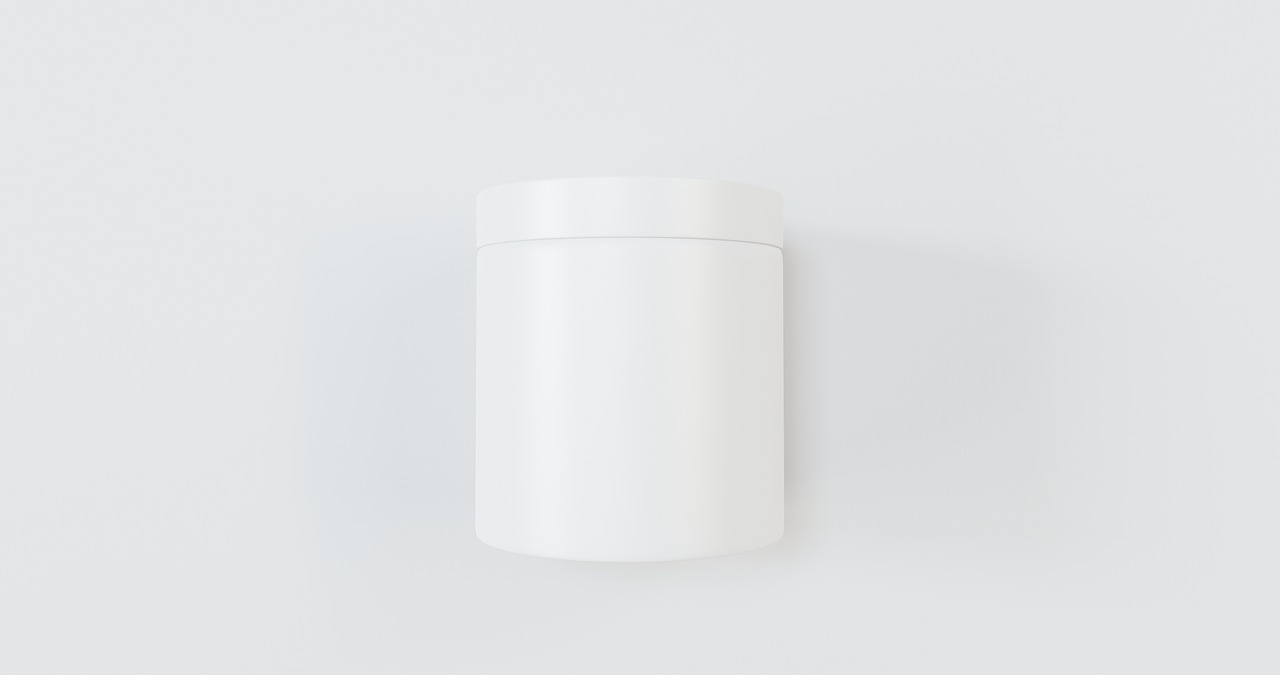
Understanding Perspective
When it comes to drawing three-dimensional shapes, perspective is your best friend. It’s like the magic lens that transforms flat images into captivating, lifelike representations. Imagine standing on a street and looking at the buildings ahead; they appear to converge at a point in the distance. This phenomenon is what artists refer to as perspective, and grasping it is essential for creating depth in your drawings.
There are two primary types of perspective you should familiarize yourself with: one-point perspective and two-point perspective. Each has its unique applications and can dramatically change how your shapes are perceived.
One-point perspective is like looking down a long hallway. All lines converge at a single point on the horizon, which is known as the vanishing point. This technique is particularly useful when drawing objects that face directly towards the viewer, such as a road or a box. For instance, when you draw a cube in one-point perspective, the front face remains square, while the sides taper towards the vanishing point, creating a stunning illusion of depth.
On the other hand, two-point perspective is used when you’re looking at an object from an angle. Instead of a single vanishing point, there are two, and they are positioned on the horizon line, one on the left and one on the right. This method is great for depicting more complex shapes and scenes, like buildings seen from a corner. Imagine standing at the intersection of two streets, where the buildings seem to stretch and shrink as they recede into the distance; that’s the magic of two-point perspective!
To illustrate the differences, consider the following table:
| Perspective Type | Vanishing Points | Best Used For |
|---|---|---|
| One-Point Perspective | One | Front-facing objects (e.g., roads, boxes) |
| Two-Point Perspective | Two | Objects viewed from an angle (e.g., buildings, corners) |
Understanding these perspectives is just the beginning! Once you’ve mastered them, you’ll be able to manipulate shapes in your drawings to create stunning compositions. Think of perspective as the roadmap that guides your viewer's eyes through your artwork. Without it, your drawings might appear flat and lifeless, lacking that vital spark that makes them pop.
Now, you might be wondering, “How do I practice this?” A great way to start is by sketching simple shapes in both one-point and two-point perspectives. Try drawing a cube or a rectangular prism from different angles. You’ll find that the more you practice, the more natural it becomes to visualize these perspectives in your mind.
As you delve deeper into the world of 3D drawing, remember that perspective is not just a technical skill; it’s an art form that can evoke emotions and tell stories through your work. So grab your pencil, and let’s bring those shapes to life!
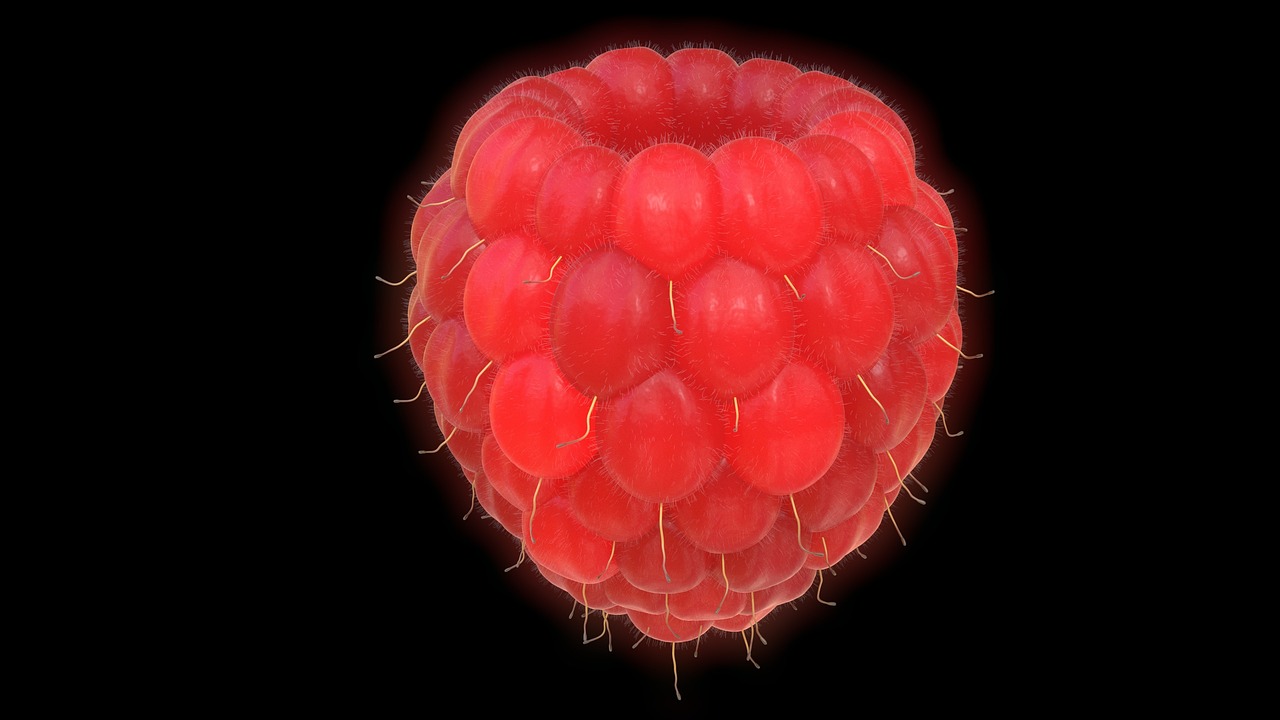
Basic Shapes in 3D
Before diving into the world of complex three-dimensional forms, it's absolutely essential to get comfortable with the basic shapes that serve as the building blocks of all 3D drawing. Think of these shapes as the foundation of a house; without a solid base, the structure above it is bound to crumble. The primary shapes you need to master include cubes, spheres, and cylinders. Each of these shapes has its unique characteristics and methods of construction, which we will explore in detail.
To start, let’s talk about the cube. This shape is incredibly versatile and appears in many forms in our everyday lives, from dice to buildings. To draw a cube, begin by sketching a square. Then, from each corner of the square, draw lines that extend at an angle. The length of these lines will determine the depth of your cube. Finally, connect the ends of these lines to form the back square. Voila! You have a cube. Remember, the key to making it look 3D is to pay attention to perspective and shading.
Next up is the sphere. Imagine a basketball; it’s perfectly round and smooth. To draw a sphere, start with a simple circle. Once you have your circle, add some shading to create the illusion of depth. Think of how light hits the surface of the sphere—there will be highlights where the light strikes and shadows on the opposite side. This technique is crucial for making your sphere look realistic, as it gives it a sense of volume and dimension.
Moving on to the cylinder, which can be visualized as a can of soda. To draw a cylinder, start with two parallel lines for the sides and connect them with two curved lines at the top and bottom. The curvature is essential to mimic the rounded edges of a cylinder. Just like with the sphere, shading is important here too. Apply a gradient of shading that darkens towards the bottom and lightens at the top to mimic how light interacts with the cylindrical shape.
As you practice these basic shapes, remember that they are not just isolated forms; they can be combined to create more complex structures. For instance, if you take a cube and a cylinder, you can create a table. Similarly, stacking spheres can give the impression of a snowman. The possibilities are endless! Mastering these basic shapes is not just about drawing; it’s about understanding how they interact with light, space, and perspective.
To further aid your understanding, here’s a quick comparison table that outlines the characteristics of each basic shape:
| Shape | Key Features | Common Uses |
|---|---|---|
| Cube | Six equal square faces, sharp edges | Buildings, boxes, dice |
| Sphere | Perfectly round, no edges | Balls, planets, bubbles |
| Cylinder | Two circular bases, straight sides | Cans, pipes, columns |
By understanding these basic shapes and their properties, you’ll be well on your way to creating more intricate and detailed 3D drawings. So grab your pencil and paper, and start practicing these shapes! The more you draw, the more confident you'll become in your ability to create stunning three-dimensional art.
- What is the best way to practice drawing 3D shapes? Start with simple sketches, focusing on one shape at a time. Gradually introduce shading and perspective as you become more comfortable.
- Do I need special tools to draw 3D shapes? While you can use any pencil and paper, having a ruler and eraser can help you achieve cleaner lines and corrections.
- Can I use digital tools for 3D drawing? Absolutely! Software like Adobe Illustrator or Blender can enhance your ability to create and manipulate 3D shapes digitally.

Constructing Cubes
When it comes to 3D drawing, cubes are the building blocks of your artistic journey. They may seem simple at first glance, but understanding how to construct them accurately is essential for creating more complex shapes later on. Think of a cube as a foundation upon which you can build your entire 3D world. So, let’s dive into the nuts and bolts of cube construction!
First, start with a basic square. This is your front face. To draw a cube, you’ll need to visualize it in three dimensions. Imagine how it would look if you were viewing it from an angle. Here’s a simple step-by-step method to get you started:
- Draw a square. This will be the front face of your cube.
- From each corner of the square, draw lines that extend back at a 45-degree angle. The length of these lines will determine the depth of your cube.
- Connect the ends of these lines to form the back face of the cube, which should also be a square.
- Finally, erase any unnecessary lines to clean up your drawing.
Now that you have a basic cube, it’s time to think about perspective. Depending on the angle from which you choose to view your cube, the proportions may change. If you’re looking at it from above, the top face will be more prominent, while a side view will emphasize the depth. Experiment with different angles to see how the cube transforms in your drawings.
Next up is adding shading. Shading is what makes your cube feel like it occupies space. Use a light source as your guide—imagine where the light hits the cube and where shadows fall. The sides facing the light should be lighter, while the sides in shadow should be darker. You can use various techniques such as:
- Cross-hatching: Layering lines in different directions to create depth.
- Blending: Using a smudge tool or your finger to soften the lines.
- Stippling: Creating texture with small dots.
Each of these techniques can add a unique flair to your cube, making it pop off the page. Remember, practice makes perfect! The more you draw cubes, the more comfortable you’ll become with their form and shading.
However, it’s important to be aware of common mistakes that can hinder your cube drawing skills. Here are a few pitfalls to avoid:
| Mistake | Correction |
|---|---|
| Incorrect angles | Use a ruler to ensure lines are straight and angles are accurate. |
| Flat appearance | Add shading to give the cube depth and dimension. |
| Inconsistent proportions | Measure your lines to maintain equal lengths for the cube's edges. |
By being mindful of these common mistakes and practicing the techniques outlined here, you’ll soon be able to construct cubes that look realistic and three-dimensional. Remember, drawing is a skill that improves with time and effort. So grab your pencil, and let’s start building those cubes!
Q: What materials do I need to draw 3D cubes?
A: You can start with just a pencil and paper. However, using a ruler for straight lines and erasers for corrections can help improve accuracy.
Q: How can I improve my shading technique?
A: Practice different shading techniques like cross-hatching and blending. Observing real-life objects and how light interacts with them can also enhance your understanding.
Q: Are there any online resources for learning 3D drawing?
A: Yes! Websites like YouTube have countless tutorials, and platforms like Skillshare offer structured courses on 3D drawing techniques.
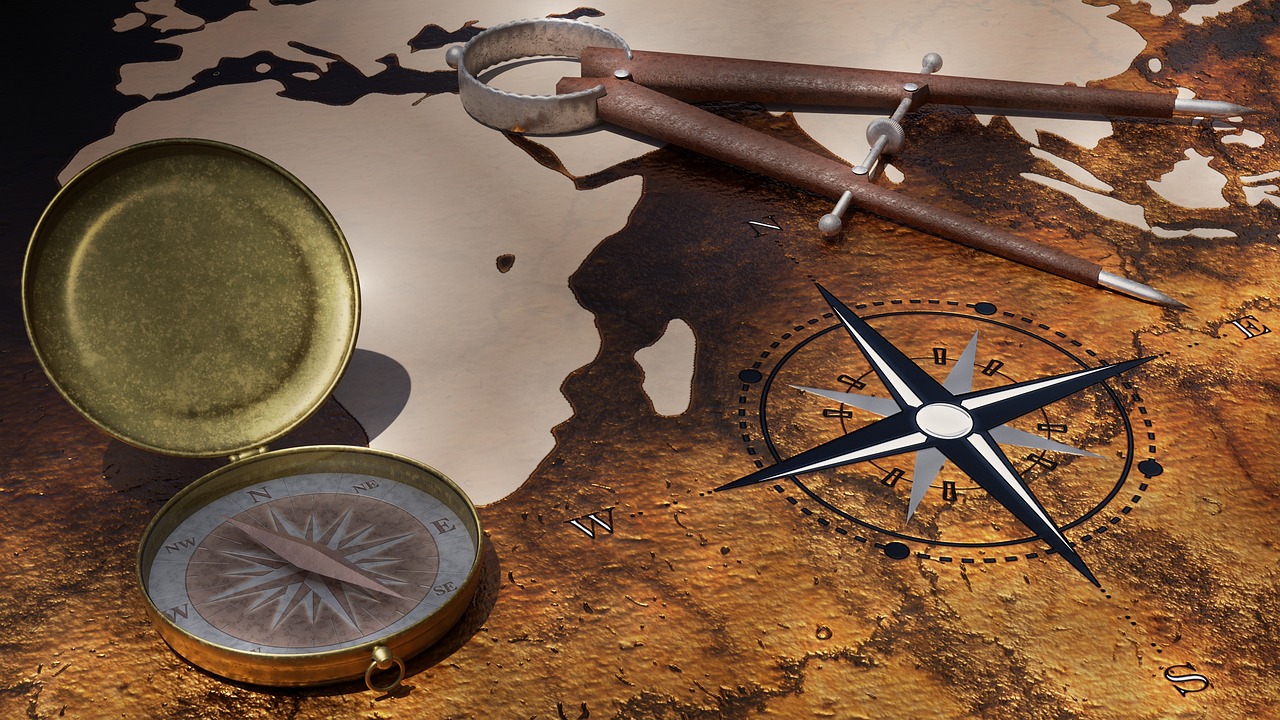
Shading Techniques for Cubes
Shading is one of the most crucial aspects of creating realistic 3D drawings, especially when it comes to cubes. By mastering shading techniques, you can enhance the depth and texture of your drawings, making them appear more lifelike. So, how do you go about shading a cube effectively? Let’s break it down!
First, it's important to understand the light source. The direction of the light will determine where highlights and shadows fall on your cube. Imagine the sun shining down on a cube placed on a table. The side facing the light will be brighter, while the opposite side will be darker. This contrast creates the illusion of depth. To illustrate this concept, here’s a simple breakdown of how light interacts with a cube:
| Side of Cube | Description |
|---|---|
| Front Face | Illuminated by the light source, this face should be the brightest. |
| Top Face | Partially illuminated; it will be lighter than the side faces but darker than the front face. |
| Side Face | In shadow; this face will be the darkest due to the angle of the light. |
Next, let’s talk about the shading techniques you can use. Here are a few popular methods:
- Hatching: This technique involves drawing closely spaced parallel lines. The closer the lines are, the darker the area appears.
- Cross-hatching: This is a variation of hatching where you overlay another set of parallel lines at an angle. This method adds even more depth and dimension.
- Blending: Using a blending stump or your finger, you can smudge pencil lines to create a smooth gradient effect.
When applying these techniques, remember to keep your pressure consistent. Start lightly and gradually build up the darkness. This will give your cube a more realistic appearance. Additionally, don’t forget to leave some areas white to represent highlights where the light hits the surface directly.
Another important tip is to consider the surrounding environment. If your cube is placed on a textured surface, the shadows and reflections will be influenced by that texture. For example, a cube on a rough surface might cast a more jagged shadow compared to one on a smooth surface. This adds another layer of realism to your drawing!
Lastly, practice is key. The more you experiment with different shading techniques, the more skilled you will become. Try drawing cubes in various orientations and under different lighting conditions to see how the shadows and highlights change. You'll be amazed at how these simple shapes can transform into stunning 3D objects with just a bit of shading magic!
- What is the best pencil for shading cubes?
A softer pencil (like 2B or 4B) is great for shading as it allows for smoother transitions between light and dark areas. - How can I practice shading techniques effectively?
Start by drawing simple shapes and gradually progress to more complex objects. Use reference images to study how light interacts with forms. - Can I use colored pencils for shading?
Absolutely! Colored pencils can add vibrancy to your drawings, but keep in mind that blending colors may require different techniques.

Common Mistakes in Cube Drawing
When it comes to drawing cubes, it's easy to fall into some common traps that can hinder your artistic progress. Many budding artists often overlook the importance of perspective, which is crucial for creating a believable three-dimensional effect. One of the most frequent mistakes is failing to establish a proper vanishing point. Without this, your cubes can end up looking flat or distorted, like they were drawn on a piece of paper rather than existing in a three-dimensional space.
Another common error is neglecting the proportions of the cube. It's essential to remember that all sides of a cube should be equal when viewed from the front. If you make one side longer or shorter than the others, it will give the impression of a distorted shape, which can be quite frustrating. To avoid this, try using a ruler or a grid to maintain consistent measurements while sketching.
Shading is another area where many artists stumble. A common mistake is either overdoing it or underdoing it. If you apply too much shading, your cube may appear more like a blob than a solid object. Conversely, too little shading can make it look flat and lifeless. The key is to find a balance. Use light shading for the areas that are facing the light source and darker shades for the sides that are in shadow. This technique will add depth and dimension to your cube.
Additionally, many artists forget to consider the light source. Without a defined light source, your cube will lack realistic shadows and highlights, which are essential for creating a three-dimensional effect. Always visualize where the light is coming from and shade accordingly. A simple way to practice this is by using a single light source, like a lamp, to cast shadows on a real cube. Observe how the light interacts with the surfaces and try to replicate that in your drawings.
Lastly, don't be afraid to make mistakes. Every artist has gone through a phase of drawing wonky cubes and awkward shapes. The important thing is to learn from these errors. Keep a sketchbook where you can practice and experiment without the pressure of perfection. Over time, you'll find that your understanding of cubes will improve, and those common mistakes will become less frequent.
To summarize, here are some quick tips to avoid common mistakes in cube drawing:
- Establish a clear vanishing point for perspective.
- Keep proportions consistent; all sides should be equal.
- Balance your shading; avoid overdoing or underdoing it.
- Always consider the light source when shading.
- Embrace mistakes as part of the learning process.
By being mindful of these pitfalls and practicing regularly, you’ll be well on your way to mastering the art of drawing cubes and enhancing your overall 3D drawing skills!
Q: What is the best way to practice drawing cubes?
A: The best way to practice is to start with simple sketches using a pencil. Focus on getting the proportions right and gradually introduce shading and perspective.
Q: How can I improve my shading techniques?
A: One effective method is to study real-life objects and observe how light interacts with them. Practice shading in different lighting conditions to see how shadows and highlights change.
Q: Should I use a ruler when drawing cubes?
A: Using a ruler can help maintain straight lines and accurate proportions, especially when you're starting out. As you gain confidence, you may choose to freehand your cubes.
Q: Is it necessary to understand perspective to draw 3D shapes?
A: Yes, understanding perspective is crucial for creating realistic 3D shapes. It helps you depict how objects appear smaller as they recede into the distance.

Creating Spheres and Cylinders
When it comes to mastering the art of 3D drawing, understanding how to create spheres and cylinders is absolutely essential. These shapes not only enhance the realism of your artwork but also serve as the building blocks for more complex forms. Imagine a world where everything is flat; it would be dull, right? That's why adding depth with spheres and cylinders can transform your drawings from mundane to breathtaking.
Let’s start with the sphere. Drawing a sphere might seem straightforward, but it requires a keen eye for detail and an understanding of light. To create a convincing sphere, visualize it as a 3D object resting in space. Begin by sketching a perfect circle; this will be your base. Once you have your circle, it’s time to think about how light interacts with it. Consider the light source in your drawing—where is it coming from? The side where the light hits will be the brightest, while the opposite side will be darker, creating a beautiful gradient that suggests roundness.
Next, let's talk about cylinders. These shapes are everywhere, from cans to pillars, and they are slightly more complex than spheres. Start by sketching two parallel lines for the height of the cylinder, then connect them with two curved lines at the top and bottom. This gives the illusion of depth. Just like with spheres, shading plays a crucial role. The top of the cylinder will be lighter where the light hits, while the sides will gradually darken as they curve away from the light source. To really nail it, pay attention to the contours—the way the light wraps around the shape is what makes it look three-dimensional.
To help you visualize the differences and similarities between spheres and cylinders, here’s a quick comparison:
| Shape | Key Characteristics | Common Uses |
|---|---|---|
| Sphere | Perfectly round, smooth surface, uniform curvature | Sports balls, globes, bubbles |
| Cylinder | Two circular bases, straight sides, height | Cans, pipes, columns |
Now that you understand the basics, practice is key. Grab a sketchbook and start drawing! Begin with simple objects around your home. Try to find a few spheres and cylinders—maybe a ball or a can of soup. Observe how they reflect light and their proportions in relation to one another. The more you practice, the more natural it will become to represent these shapes accurately in your drawings.
Lastly, don’t forget that mistakes are part of the learning process. If your sphere looks more like an egg or your cylinder seems flat, don’t sweat it! Take a step back, analyze what went wrong, and try again. Every artist has been there; it’s all part of the journey. With time and persistence, you’ll find yourself creating spheres and cylinders that leap off the page!
- What tools do I need to draw 3D shapes? A simple pencil, eraser, and paper are sufficient to start. As you progress, you might want to explore shading tools like blending stumps or colored pencils.
- How can I improve my shading techniques? Practice is essential! Experiment with different light sources and observe how shadows fall on various objects. Gradually build up layers of shading for depth.
- Are there any online resources for learning 3D drawing? Absolutely! Websites like YouTube have countless tutorials, and platforms like Skillshare offer structured courses.
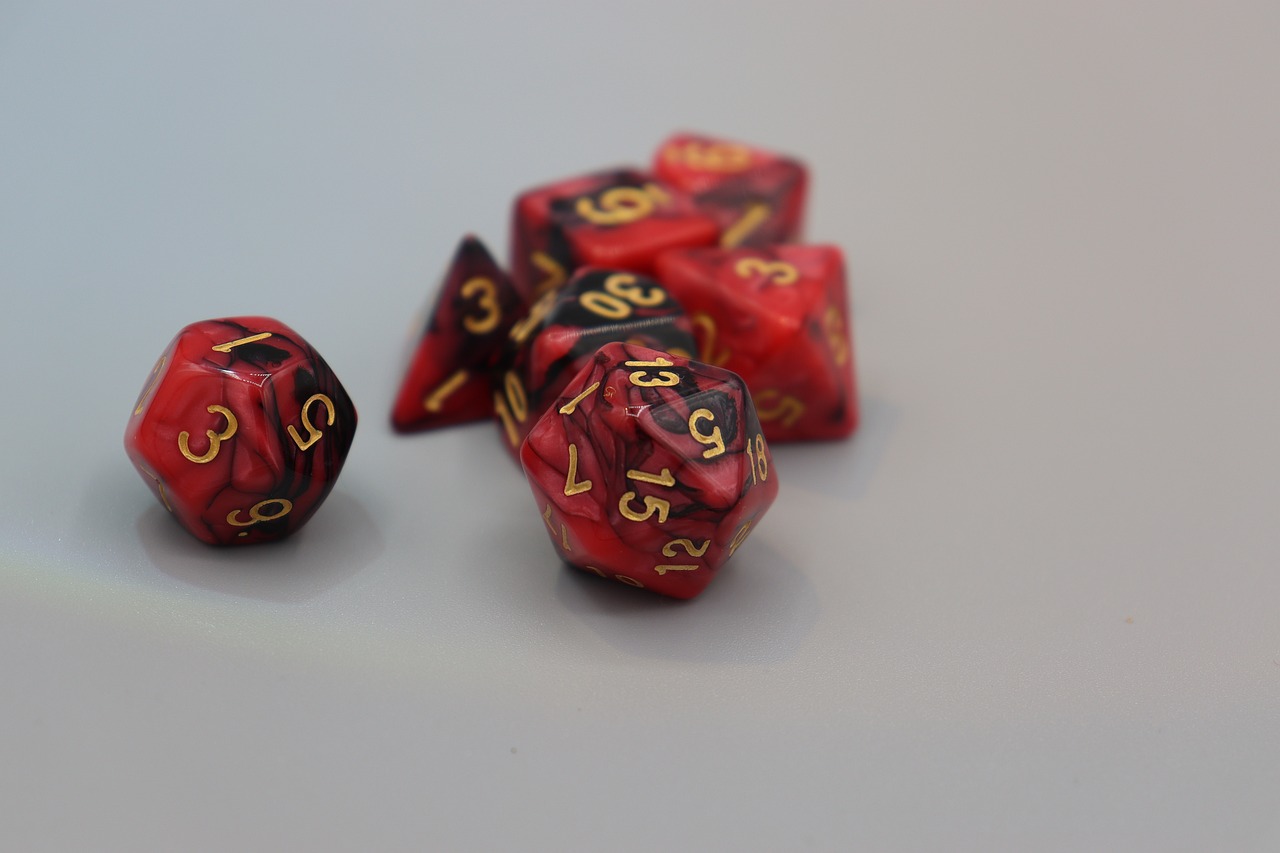
Advanced 3D Shapes
Once you've got the hang of basic shapes, it's time to level up your drawing game with . These include pyramids, cones, and even more intricate structures that can really showcase your artistic flair. Drawing these shapes isn't just about getting the lines right; it's about understanding their form and how they interact with light and shadow. Think of it like building a house: you can't just slap on a roof without first laying down a solid foundation. In this section, we’ll explore how to draw these shapes with precision and creativity.
Let's start with the pyramid. To draw a pyramid, you need to visualize it as a square base with triangular sides that meet at a point. Begin by sketching the square base, ensuring it's level. From each corner of the square, draw lines that converge at a single point above the center of the square. This point represents the apex of the pyramid. The challenge here is to maintain the correct angles and proportions to give the pyramid a convincing three-dimensional look. Remember, perspective plays a huge role in making it appear realistic!
Next up is the cone. Picture an ice cream cone – it’s a simple shape, but it can be tricky to draw correctly. Start with a circle for the base, then draw two lines that taper upwards to a point, forming the cone’s tip. The key to making your cone look three-dimensional is in the shading. Use a gradual gradient to show how light hits the surface, creating depth. This is where your understanding of light sources comes into play. Is the light coming from the left? Then the right side of the cone should be darker, enhancing that 3D effect.
Now, let's get a bit more complex. Combining shapes can lead to stunning results. For instance, if you take a cone and place it on top of a cylinder, you create a funnel shape. To draw this, start with the cylinder by sketching two parallel lines for the sides and a circle for the top. Then, add the cone on top, making sure the base of the cone aligns perfectly with the top of the cylinder. This method of combining shapes opens up a world of possibilities for your designs, allowing you to create everything from vases to intricate architectural structures.
To help you visualize this, here’s a simple table that summarizes the steps for drawing these advanced shapes:
| Shape | Steps |
|---|---|
| Pyramid |
|
| Cone |
|
| Combined Shapes |
|
When it comes to advanced 3D shapes, practice is essential. Don’t be afraid to experiment with different angles and perspectives. The more you practice, the more comfortable you’ll become with these shapes, and soon, you’ll be able to visualize and draw them from any angle. Remember, even the most complex structures can be broken down into simpler forms. Like sculpting, it’s about chiseling away at your understanding until the masterpiece is revealed.
Q: How can I improve my 3D drawing skills?
A: Practice regularly, study real-life objects, and learn about perspective and shading techniques.
Q: What materials do I need to start drawing 3D shapes?
A: All you need is some paper and a pencil. As you advance, you might want to experiment with colored pencils or markers for shading.
Q: Can I use digital tools to draw 3D shapes?
A: Absolutely! Digital art software often provides tools that can help you create and manipulate 3D shapes easily.
So grab your sketchbook, unleash your creativity, and start exploring the exciting world of advanced 3D shapes!

Combining Shapes
Combining shapes is like mixing colors on a palette; it opens up a world of creativity and endless possibilities. When you start to merge basic 3D shapes, you can create complex objects that captivate the viewer's eye and spark their imagination. Think of it as building blocks for your artistic expression. Just as a chef combines ingredients to create a masterpiece, you can blend cubes, spheres, and cylinders to design intricate structures that tell a story.
To effectively combine shapes, begin by visualizing the final object you want to create. For instance, if you're aiming to draw a simple house, you can start with a cube for the main structure and then add a pyramid on top for the roof. This approach not only simplifies the drawing process but also helps maintain the proportions and perspectives of the combined shapes. The key is to remember that each shape retains its own characteristics, even when merged with others. This means that understanding the properties of basic shapes is crucial to success.
Here’s a quick breakdown of some common combinations:
- Cube + Cylinder: Great for creating objects like tables or pillars.
- Sphere + Cylinder: Perfect for designing objects like bottles or vases.
- Pyramid + Cube: Ideal for drawing houses or structures with pitched roofs.
As you start combining shapes, it’s important to maintain a sense of balance and proportion. Think of your drawing as a three-dimensional puzzle; each piece must fit together seamlessly to create a cohesive whole. You can use guidelines and light sketches to outline where each shape will go before committing to the final lines. This technique not only saves time but also reduces the frustration that comes from erasing and redrawing. It’s all about building a solid foundation before adding the final touches.
Another crucial aspect of combining shapes is understanding how light interacts with different surfaces. When you merge shapes, consider how shadows and highlights will fall on the object. For instance, if you have a cylinder resting on a cube, the light source will cast a shadow from the cylinder onto the cube, creating depth and realism. Experiment with different shading techniques to emphasize the contours of your combined shapes, making them pop off the page.
As you gain confidence in combining shapes, don’t hesitate to experiment. Mixing unconventional shapes can lead to unique creations. Perhaps you want to merge a sphere with a cube to create a whimsical character or an abstract sculpture. The possibilities are truly endless! Keep a sketchbook handy to jot down your ideas and practice regularly. The more you experiment, the more refined your skills will become.
Q: How do I know which shapes to combine?
A: Start by visualizing the object you want to create and break it down into basic shapes. Consider the object's form and function, and then experiment with different combinations.
Q: Can I combine more than two shapes?
A: Absolutely! Combining multiple shapes can lead to more complex and interesting designs. Just ensure that you maintain proportion and balance throughout the process.
Q: What if my combined shapes don’t look right?
A: Don't be discouraged! It’s all part of the learning process. Revisit the basic shapes, adjust your proportions, and keep practicing. You can also seek feedback from fellow artists.
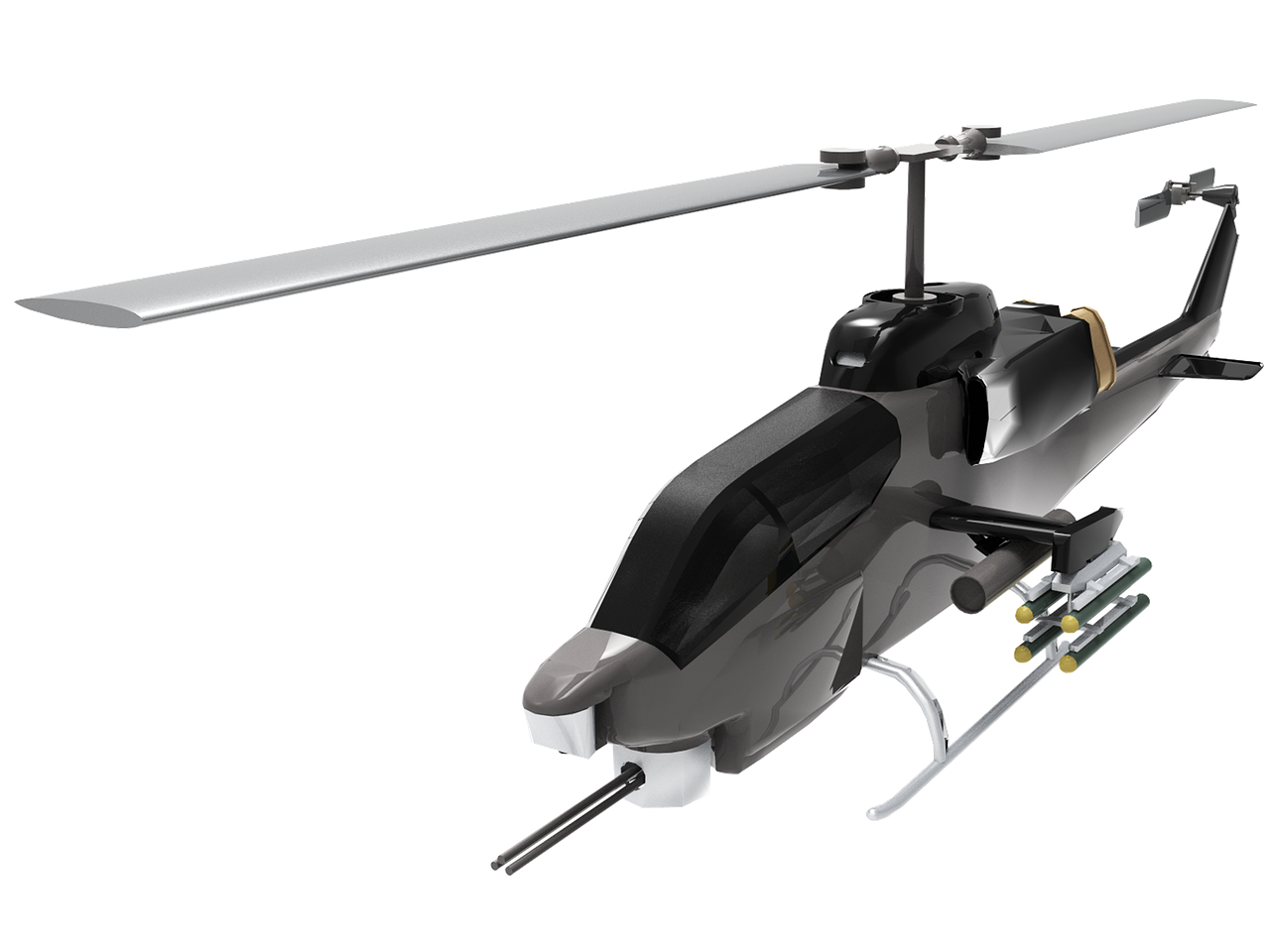
Using Grids for Accuracy
When it comes to drawing in three dimensions, precision is key. This is where grids come into play. Utilizing grids can significantly enhance your ability to maintain proportions, align your shapes accurately, and create a cohesive composition. Imagine trying to build a house without a blueprint; it would be chaotic, right? Similarly, grids serve as a foundational framework for your drawings, guiding you through the complexities of 3D shapes.
Grids can be particularly beneficial when you're starting to draw more intricate objects. By overlaying a grid on your canvas, you can break down complex forms into manageable sections. This method allows you to focus on one part at a time, ensuring that each segment is proportionate to the others. For example, when drawing a complex structure like a building, you can outline the base using the grid to keep everything aligned and to scale.
To effectively use grids in your 3D drawing, consider the following tips:
- Choose the Right Grid: Different projects may require different types of grids. A simple square grid might suffice for basic shapes, while a more intricate isometric grid can help with more complex forms.
- Adjust Grid Size: Depending on the size of your drawing, you may want to adjust the size of your grid squares. Smaller squares can help with finer details, whereas larger squares can provide a broader view for overall proportions.
- Practice with Light Guidelines: When using a grid, draw your initial lines lightly. This way, you can easily erase them later without disturbing your final artwork.
Another advantage of grids is their ability to assist in perspective drawing. By aligning your shapes with the grid lines, you can better understand how objects relate to one another in space. This is especially useful when you’re working with one-point or two-point perspective, as the grid can help you establish vanishing points and horizon lines more accurately.
Here’s a quick table that summarizes the benefits of using grids in your 3D drawings:
| Benefit | Description |
|---|---|
| Proportional Accuracy | Helps maintain consistent sizes and shapes. |
| Alignment | Ensures all elements are aligned correctly. |
| Complex Structure Breakdown | Allows for easier construction of intricate designs. |
| Perspective Guidance | Aids in establishing vanishing points and horizon lines. |
In conclusion, grids are an invaluable tool for anyone looking to enhance their 3D drawing skills. They provide a structured approach to creating art, allowing you to focus on the creative aspects without getting lost in the details. So, the next time you sit down to draw, consider laying down a grid first. It might just be the secret ingredient that takes your artwork from flat to fantastic!
Q: Do I always need to use a grid when drawing in 3D?
A: While it's not mandatory, using a grid can greatly enhance your accuracy, especially for complex shapes. As you become more comfortable with 3D drawing, you may find you rely on grids less.
Q: Can I create my own grid?
A: Absolutely! You can create grids of various sizes and shapes depending on your needs. Just make sure they align with the dimensions of your drawing.Q: Is using a grid considered cheating?
A: Not at all! Many professional artists use grids as a tool to enhance their work. It’s a legitimate technique that helps maintain accuracy and proportion.
Frequently Asked Questions
- What is perspective in 3D drawing?
Perspective is a technique used to create the illusion of depth and space in your drawings. It helps to position objects in relation to the viewer's eye level, making them appear more realistic. Understanding one-point and two-point perspective is crucial for accurately depicting three-dimensional shapes.
- How can I improve my shading techniques?
Improving your shading techniques involves practicing different methods, such as hatching, cross-hatching, and blending. Experiment with various tools like pencils, charcoal, or even digital brushes. The key is to observe how light interacts with objects and replicate that in your drawings to create depth and texture.
- What are some common mistakes when drawing cubes?
Some common mistakes include incorrect angles, inconsistent line weight, and neglecting to consider light sources. To avoid these pitfalls, always double-check your proportions and angles, and practice drawing cubes from different perspectives to enhance your understanding of their three-dimensional nature.
- How do I draw spheres and cylinders accurately?
To draw spheres and cylinders accurately, start by sketching their basic shapes lightly. Pay attention to the curvature of the sphere and the straight edges of the cylinder. Use shading to indicate the light source and create a sense of volume, making sure to blend smoothly for a realistic appearance.
- What are advanced 3D shapes, and how do I draw them?
Advanced 3D shapes include pyramids, cones, and complex structures. To draw them, break them down into simpler shapes first. Understand their unique characteristics and practice combining basic shapes to create these more complex forms, ensuring you maintain accurate proportions and perspectives.
- How can grids help in 3D drawing?
Grids are a fantastic tool for maintaining accuracy in your 3D drawings. They help you keep proportions consistent and allow you to plot points for complex shapes more easily. By using grids, you can ensure that your artwork remains balanced and visually appealing.



















